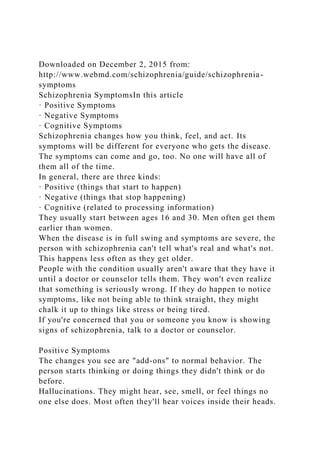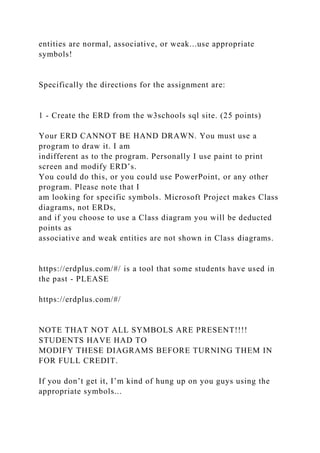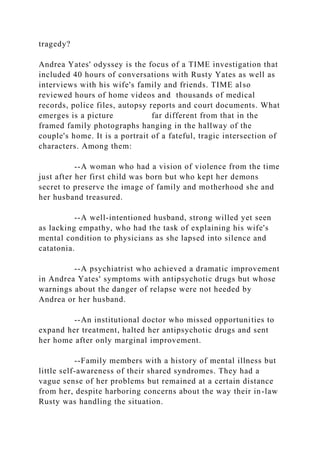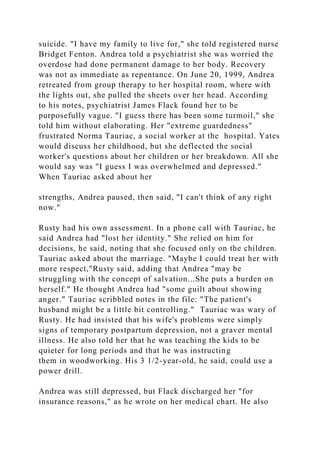The document discusses schizophrenia, detailing its symptoms which are categorized into positive, negative, and cognitive aspects, and highlights that these can differ from person to person. It describes the onset of symptoms typically between ages 16 and 30, with both men and women affected, and outlines various psychotic disorders including their causes, diagnosis, and treatment options. The overall message emphasizes the importance of recognition and early intervention for managing the disorders effectively.




































